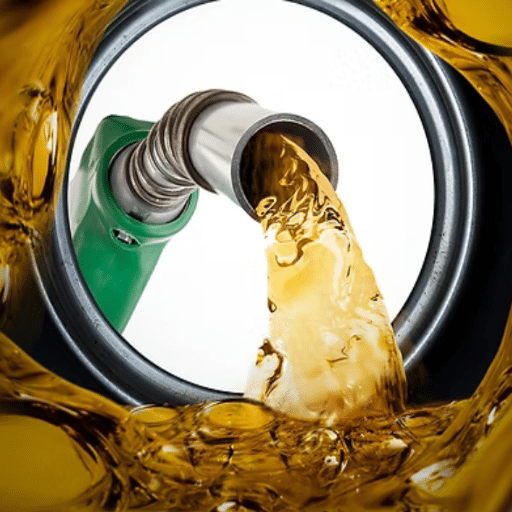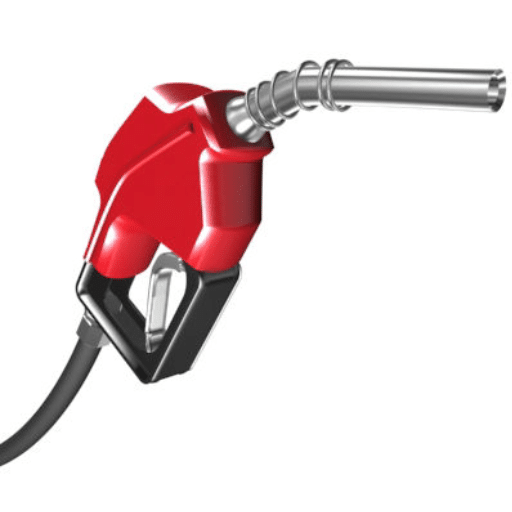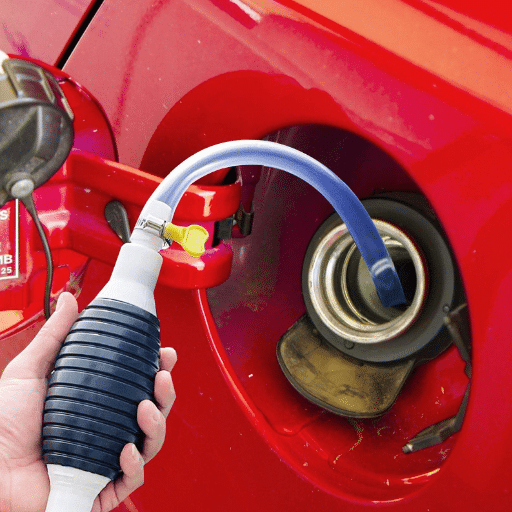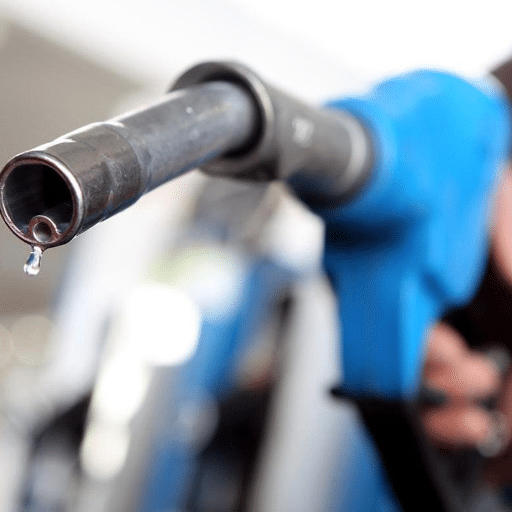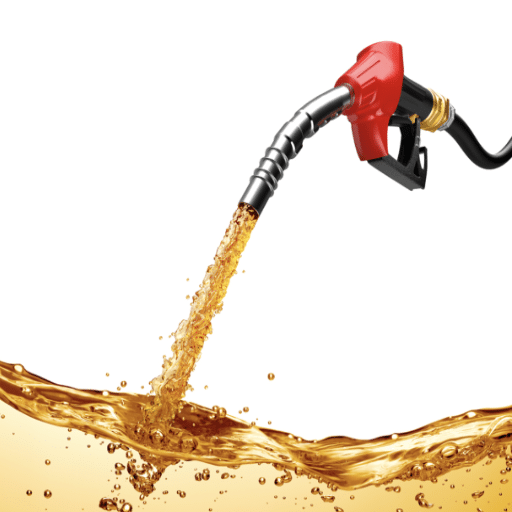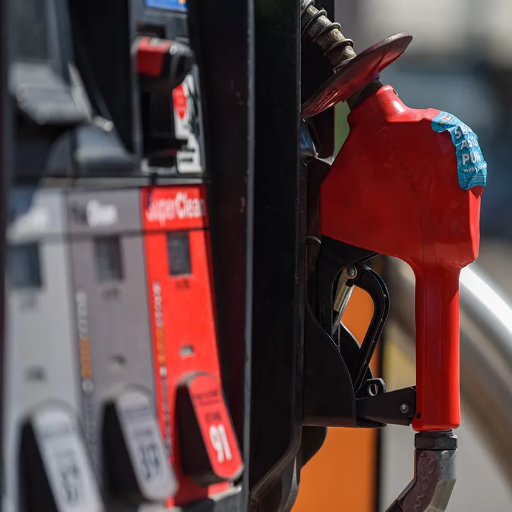Have you ever stopped to analyze this Infrastructure in amazement? Aerosol sprays and other goods are stored in underground storage tanks at gas stations, which must be adequately maintained at each station. But exactly how big are these tanks really, and what determines the size? This topic delves deeply into all aspects concerning gas station tanks, including their typical capacities and the factors that influence the design and operation of these tanks. It would enlighten either the inquisitive driver or an observer interested in the details surrounding their neighborhood pump.
Overview of Gas Station Storage Tanks
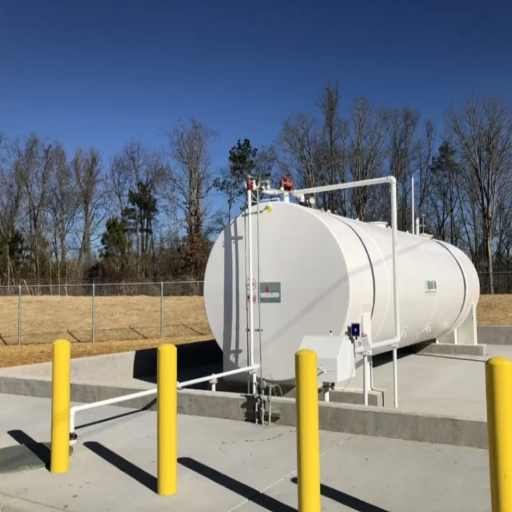
These are typical large underground storage containers for gasoline, diesel, and other types of fuel. Depending on the location and demand of the station, the sizes of these tanks range from 10,000 to 30,000 gallons. Almost always oriented towards safety and functionality, these structures rely on steel or fiberglass materials that prohibit leakage and contamination into the soil. In the present-day setup, the tanks are even monitored to ensure proper upkeep, giving an early warning at the first crack of trouble, such as an oil leak. Doing so allows the storage tanks to ship in fuel without breaking any environmental, health, or safety-related laws.
Introduction to Fuel Storage
Fuel storage systems serve as supporting infrastructure within heavy industries and transportation, as well as for the energy platform. With energy demand having been steadily on the rise, the need for secure and reliable storage systems has never been more evident. Estimates indicate that in 2023, global daily oil consumption reached 100.6 million barrels, underscoring the pressing need for adequate and secure storage facilities to meet such substantial volumes.
Modern-day fuel storage systems are constructed with materials that are both colorful and enhanced for strength and environmental friendliness. Double-walled steel tanks and fiberglass construction, with their corrosion resistance, are among the evolving technologies being increasingly used to restrict leakage and prevent groundwater contamination. Meanwhile, intelligent monitoring systems equipped with sensors and real-time tracking serve as early-warning systems for any abnormality, such as changes in water pressure or a drop in liquid levels during discharge, that could lead to an accident, allowing operators to take corrective actions.
It is also this technology that integrates new energies into the fuel storage spectrum, now providing storage systems for alternative fuel sources, such as biofuels or hydrogen. This development represents a movement toward green and sustainable energy concepts, and therefore meets amended environmental regulations. This evolution exemplifies the need for fuel storage to keep pace with the ever-growing energy demand, both present and future.
Types of Storage Tanks
Storage tanks are a vital component of modern energy infrastructure, as they play a key role in the safe storage of fuels, chemicals, and water. Various designs and materials are selected to fit specific needs and applications.
Above-Ground Storage Tanks (ASTs): Above-ground storage tanks are widely employed for storing fuel, chemicals, and other liquids. Typically manufactured from steel or concrete, the tanks were meant for easy maintenance and inspection. Advanced safety mechanisms are now incorporated into modern AST systems, including those for leak detection and secondary containment in the event of a spill, thereby minimizing environmental harm. The market for ASTs is expanding, driven by increasing energy demand and the need for secure storage facilities in both developed and emerging economies.
Underground Storage Tanks (USTs): These tanks comprise systems used for fuel storage at petrol pumps and industrial units. Conceived to save space, these USTs are installed below ground and are commonly made using corrosion-resistant materials such as fiberglass-reinforced plastic. Efforts to upgrade USTs include responding to strict government regulations with double-walled designs and enhanced monitoring mechanisms to prevent leakage. Evidence shows that investment in UST technology is growing globally as industries employ safer and greener energy solutions.
Cryogenic Storage Tanks: Cryogenic storage tanks have been designed for storing liquefied gases, such as liquid nitrogen, oxygen, or liquefied natural gas (LNG), at extremely low temperatures for highly specialized applications. Very tight temperature control must be maintained in the tank to ensure the liquefied gas remains in the liquid phase. Innovations in insulation and materials science have significantly contributed to improving the efficiency of these tanks. With the increased demand for LNG as a cleaner energy source, this type of cryogenic tank is subject to intense research and development and is being vigorously installed worldwide.
Fixed Roof Tanks: Fixed roof tanks are for storing relatively stable liquids such as water or petroleum products. The roof is fixed to the top of the cylindrical tank body, allowing for simple and inexpensive storage. Newer designs, however, incorporate safety devices to reduce vapor losses and comply with environmental standards, rendering them suitable for long-term storage.
Floating Roof Tanks: Floating roof tanks are widely used for storing volatile liquids, such as crude oil and other hydrocarbons. Unlike fixed-roof tanks, a floating roof essentially floats on the liquid surface, thereby minimizing evaporation and the accumulation of flammable vapors. Advancements now include vapor recovery systems with floating roof technology, which further reduce emissions and support environmental conservation.
The global storage tank industry is still growing, driven by innovative developments and rising energy demand. The new wave of technology in integrated monitoring solutions, automation, and improved materials is making storage tanks more efficient, safer, and environmentally friendly, thereby securing their place in the energy landscape for the foreseeable future.
Importance of Tank Size
Tank size is a factor to consider when optimizing operations, meeting storage demands, and maintaining cost-effectiveness. Larger tanks can store larger volumes of liquids or gases, thereby reducing the need for frequent refilling or replacement in large industries, such as oil and gas, water treatment, or chemical production. For example, crude oil storage tanks may range in capacity from a few thousand barrels to several million barrels, depending on the infrastructure and demand.
Tank size influences planning and allocation to a site and, consequently, resource allocation. Large storage tanks also demand the installation of safety systems to prevent the consequences of leaks or spills. In contrast, smaller tanks would be better suited for facilities with limited space or applications where precise storage of specialized materials is crucial.
According to recent figures, advancements in tank design have enabled companies to develop modular and scalable solutions, allowing them to customize tank sizes to meet their specific requirements without compromising safety or environmental standards. Correctly sized tanks lead to more efficient operations by reducing costs associated with installing tanks that vastly exceed their capacity, or by minimizing the need for frequent refilling, which in turn makes the site more productive.
Underground Storage Tanks (UST)
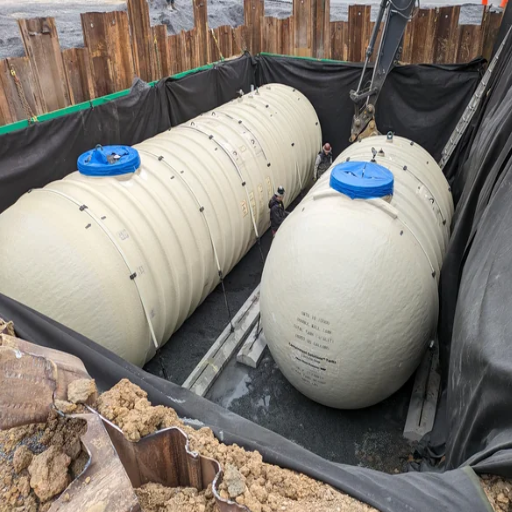
Essentially, these tanks are used to store liquids, such as petroleum, chemicals, and wastewater, underground. When maintained well, Underground Storage Tanks conserve surface land while reducing the chances of spills or contamination. In keeping with the environment, regulations are vital to ensure the USTs do not leak into the soil and groundwater. Regular inspection, leak detection systems, sound design, and workmanship are essential factors of the safe and proper operation of a UST.
What Are USTs?
From a market perspective, Underground Storage Tanks (USTs) are indeed crucial in industries such as fuel distribution, agriculture, and wastewater management. In fact, in the United States alone, recent figures show there are more than 540,000 active USTs holding substances such as gasoline, diesel, and hazardous chemicals. These tanks hold substances in large volumes, resulting in space savings and reducing the likelihood of accidental spills.
To mitigate environmental risks, modern USTs feature new-generation technical designs with double-wall construction and corrosion-resistant materials. Hence, a leak is hardly ever possible, as such a leak would otherwise result in soil and groundwater damage claims that run into millions of dollars. These days, new-age leak detection systems are installed, enabling operators to monitor integrity issues in real-time and detect and resolve problems swiftly.
The Environmental Protection Agency (EPA) helps ensure that owners and operators abide by regulations to prevent environmental damage, among other things. For instance, EPA regulations require tanks to be appropriately installed and periodically inspected and maintained to ensure compliance. Over the last decade, studies have shown that adherence to these regulations has significantly reduced incidents of tank-related contamination, underscoring the importance of vigilance during operation and the need for continued innovation in UST technologies.
Common Sizes of Underground Fuel Storage
Underground storage tanks (USTs) come in various sizes, catering to different demands, ranging from relatively small tanks used by local businesses to large ones for commercial or industrial purposes. Standard tank sizes include 550 gallons, 1,000 gallons, 2,000 gallons, and 10,000 gallons; many of these are designed for customized sizing.
Larger installations, such as fuel stations or distribution centers, would require larger tanks with capacities ranging from 12,000 to 30,000 gallons or more, depending on demand. For structural strength and corrosion resistance, tanks are now constructed of either steel or fiberglass-reinforced plastic. Companies compartmentalize such tanks to carry different types of fuel on the same site-that way, space and operations are optimized.
It is helpful to know what size is appropriate, depending on the individual site’s fuel consumption, installation space, and environmental laws, among other factors. Proper sizing helps with cost efficiency and reduces the need for frequent refills. It also reduces ecological risks associated with overstocking or storage inaccuracies.
Installation Considerations for USTs
Installation must be done with care. In addition to safety considerations, the method of installation must ensure long-term durability and reliability. Site installations must be well-planned, including thorough soil testing to ensure the stability and compatibility of the soil, as well as verifying that the chosen area is free from hazardous contaminants. Tanks are to be installed at the specified depth, clear of underground utilities, buildings, and any other vital structures.
Fundamental industry data recommends double-walled tanks, which provide the best protection against leaks. Furthermore, materials resistant to corrosion, such as fiberglass-reinforced plastic or steel treated to resist corrosion, should be chosen for their durability. Best possible monitoring systems, such as automatic tank gauging (ATG) systems, are also strongly recommended to maintain continuous fuel level monitoring and provide early warning of any leakage.
Any local or municipal permits required must be obtained well in advance of the commencement of the installation work. Using a suitable backfill material, such as good, clean sand or gravel, throughout the installation will ensure the tank is well-supported and prevent damage to its thin outer shell. After installation, the work should undergo a series of tests, such as tightness testing and pressure testing, to ensure a tight seal and compliance with local regulatory requirements.
Modern Fuel Storage Solutions
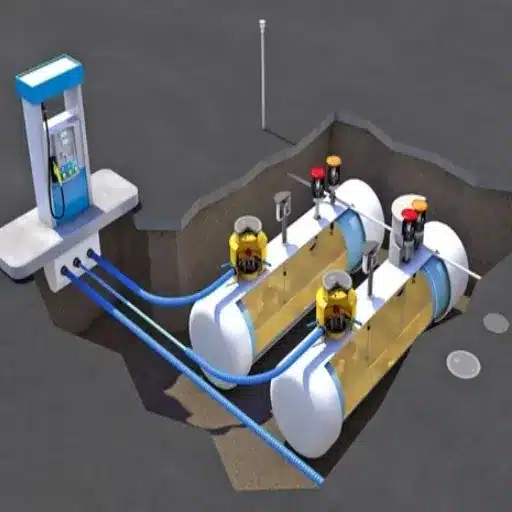
Today, fuel storage solutions excel in terms of efficiency, safety, and environmental care. Construction involves the use of advanced materials that are resistant to corrosion and leakage, making them durable. They also often possess automated monitoring systems that convey information, such as the current fuel level and warning of possible problems, thus facilitating maintenance. Moreover, these solutions comply strictly with environmental laws to prevent environmental risks and promote sustainability. Companies that adopt these systems can focus on enhancing operational safety while reducing maintenance costs.
Innovations in Fuel Tank Technology
Recent years have witnessed significant advancements in fuel tank technology, with a focus on enhancing safety, efficiency, and environmental sustainability. Some of the recent innovations that are essential include the development of composite fuel tanks, constructed with lightweight materials such as carbon fiber-reinforced polymers. Such materials reduce the weight of the tank, which translates to improved mileage for vehicles, as they require less energy to maintain structural integrity.
Another significant improvement includes the development of advanced sensor systems installed in fuel tanks. The sensors provide more accurate and precise real-time monitoring of fuel level, temperature, and pressure, resulting in improved efficiency and early warnings of potential issues. Some systems may come equipped with IoT connectivity, enabling them to transmit data to a centralized system for monitoring and analysis. This is a significant advantage when dealing with large fleets or industrial fuel storage facilities.
Moreover, double-walled fuel tanks are increasingly gaining popularity in the name of safety and environmental compliance. These tanks provide a secondary containment system for leaks and spills, practically eliminating any substantial risk of environmental contamination. Industry sources claim that double-walled systems can reduce fuel loss during technical failure by up to 95%, making them the most effective solution in high-risk areas.
Another growing area of interest is the compatibility of renewable fuels. Fuel tanks of the 21st century are being developed with the storage of alternative fuels, such as biodiesel, hydrogen, and LNG (liquefied natural gas), in mind, to support the world’s cleaner energy perspective. With a hard surge in hydrogen fuel demand expected by 2030, manufacturers are already working on developing storage tanks that can resist the unique chemical and temperature challenges posed by hydrogen storage.
The innovations are an infallible indicator of how the fuel industry has set out to develop hardy, intelligent, and environmentally conscious solutions to meet the changing demands of businesses worldwide.
Environmental Considerations
The primary driving factor behind the shift toward cleaner energy sources is the reduction of greenhouse gas emissions and the mitigation of climate change. Hydrogen is, for instance, a zero-emission fuel at its point of use, producing only water as a by-product when combusted or used in fuel cells. Recent analyses suggest that increasing the percentage of hydrogen in the global energy mix could result in an annual reduction of 6 gigatons in CO₂ emissions by 2050.
Similarly, in the course of LNG’s acceptance as a substitute for classical fossil fuels, it has been reported to have environmental benefits, including a slight reduction in carbon dioxide emissions of up to 25 percent compared to those from oil-based fuels. Furthermore, LNG significantly reduces sulfur oxides emissions and nearly 90% of nitrogen oxides emissions. These cleaner energy transitions are critical steps to align with global carbon neutrality objectives, such as those set in the Paris Accord.
It is also worth considering the sustainability of these fuels from their point of production. For example, green hydrogen, produced using renewable electricity and water, ensures that the output remains sustainable. Constant investment in renewable electricity infrastructure and storage technologies is crucial to scaling these sustainable solutions while minimizing their environmental impact.
Regulations Surrounding Storage Tanks
The rules regulating storage tanks ensure the protection of the environment, public safety, and operational efficiency. These tanks are typically used for liquids and gases, such as oil, chemicals, or other hazardous materials, with guidelines varying from region to region and depending on the type of material being stored.
One significant ruling applicable in many areas concerns the standards established by enforcement bodies, such as the U.S. Environmental Protection Agency, under the Resource Conservation and Recovery Act. Such rules include requirements for tank design, secondary containment, leak detection, and regular inspections, all geared towards preventing spills and leaks that could harm the environment. For instance, the EPA requires that underground storage tanks be protected against corrosion and properly programmed to avoid overfilling, thereby reducing the risk of contaminating groundwater.
International standards, such as those from the American Petroleum Institute, also help establish uniform practices for storage tank construction and maintenance. For example, API 650 establishes standards for welded tanks used in the storage of liquid petroleum and chemical products, ensuring their structural strength and safety during operational use.
The data truly demonstrates the importance of adhering to these regulations. Approximately 20% of storage tank failures are attributed to inadequate inspection, maintenance, or poor compliance with regulatory guidelines, according to industry reports. Investments in inspection techniques, including ultrasonic testing and automated monitoring systems, have helped mitigate damage and further enhance compliance.
Additionally, regulations promote the safe decommissioning of storage tanks once they have become aged or obsolete, thereby averting chronic hazards. Strict penalties and fines for non-compliance only serve to persuade the industries to adhere to best practices.
Ultimately, with an increased dependency on storage operations by industries and evolving regulations, priority is given to optimum safety and environmental responsibility. Stakeholders are advised to stay informed about these adjustments to avoid interruptions or liabilities at a later stage.
Choosing the Right Tank Size
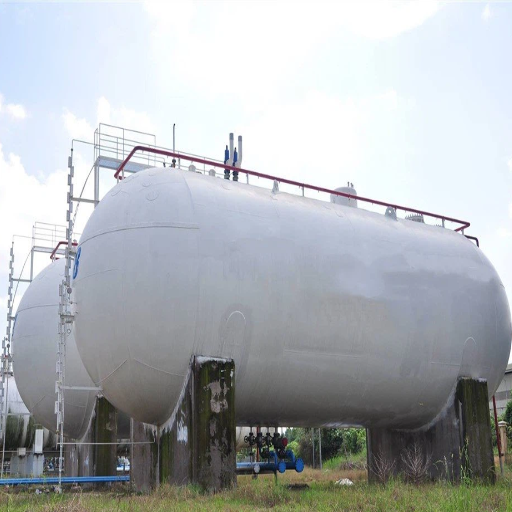
The question of tank size often depends on factors such as your storage requirements, the space available, and the type of material being stored. First, determine the required volume by considering your usage. Also, consider future growth; few people ever overestimate their capacity. Additionally, inspect the physical location where the tank will be installed to ensure there is sufficient room for the tank itself, as well as for maintenance access. For liquids with safety or material concerns, the manufacturer may provide guidelines for tank sizes that meet compliance requirements. Correct sizing is essential for effective operations, as it eliminates unnecessary pressure or expense.
Factors Influencing Tank Size Selection
Usage Requirements: The primary factor influencing tank size selection is the volume of storage required by a given installation. For instance, irrigation tanks in agriculture may range from 5,000 to over 100,000 gallons, depending on the irrigation water needs and the amount of rainfall available. Industrial processes require bigger capacities to store chemicals or raw materials. Ideally, one should evaluate peak times of use and the overall consumption to estimate the optimal size.
Available Space and Site Conditions: Look at the installation site to identify any spatial limitations for the tank. Urban or constrained areas may require vertical tanks to minimize their footprint, whereas rural areas with ample space may opt for a horizontal orientation or larger tank setups. Prepare the ground for installation by leveling it and considering its load-bearing capacity, as the tanks’ filled weight can sometimes exceed several tons.
Material Compatibility and Safety Standards: The nature of the stored material affects the selection of materials and, thus, the tank size. Water storage, for instance, calls for food-grade polyethylene or stainless steel tanks. Corrosive chemicals might need fiberglass or lined steel tanks. Also, adhere to any applicable safety standards, such as OSHA or EPA regulations, for both audits and longevity.
Climate and Environmental Conditions: Local climatic conditions may influence the choice of tank selection. Places with frequent rainfall may opt for smaller rainwater harvesting tanks. Conversely, typical drought-ridden regions would mostly need bigger tanks for storing water over a long period. Meanwhile, a place with more extreme temperature variances may require insulation or specialized materials to protect the contents.
Future Growth and Scalability: Always allow for expansion needs when picking a tank. Industries that grow rapidly tend to adopt modular tank systems, which facilitate revisions and result in fewer costs for replacements or upgrades.
Budget Constraints: Larger sizes tend to have higher initial costs; however, the price per gallon is significantly lower. Consider the investment and operational costs over time when determining the appropriate size. Include maintenance and repair costs as replacement costs, which vary considerably depending on tank size and material.
Volume Requirements for Different Stations
The volume requirements for different stations vary considerably depending on their purposes and daily operations. For example, a fire station may require a storage tank with a capacity of 10,000 to 30,000 gallons to ensure sufficient water during emergency services. Agricultural stations would require larger water reserves, with tanks ranging from 50,000 to 100,000 gallons, to support irrigation systems, livestock watering, and other related farming activities.
Industrial stations are required before manufacturing processes requiring volumes of at least 20,000 gallons, depending on their scale of operation, for their cooling, cleaning, or chemical processing needs. Water treatment plants for residential or community levels would require tanks of approximately 5,000 to 15,000 gallons for storing and distributing potable water for individual households.
In planning for these requirements, one must also consider peak demands, the area’s weather patterns, and refill cycles. These ensure that the proposed tank size is viable in the long run and can meet operational needs at all times.
Impact of Fuel Demand on Tank Size
Whatever else, the amount of fuel demanded determines the sizes of tanks needed by industries and their corresponding applications. Heavy fuel consumption requires larger tank sizes, especially for large industrial organizations or agricultural operations that utilize fuel for machinery, vehicles, or even backup generators, as uninterrupted supplies must be ensured. To cite a typical example, the agriculture sector in the United States consumes more than 6 billion gallons of diesel yearly, thus implying the need for large-capacity tanks in farming activities.
Similarly, transportation hubs and fuel distribution centers require large-capacity tanks to accommodate fluctuating market demands. An average U.S. gas station dispensing, say, 4,000 gallons of fuel daily, may rely on underground storage tanks with capacities ranging from 10,000 gallons to 30,000 gallons for adequate fuel availability.
Seasonal variations may also affect fuel demand; harsh winter seasons or energy-intensive harvesting seasons typically increase consumption, along with the need for more storage space to protect against supply chain disruptions. There are industries with predicted peak operational periods, such as construction during the summer; they also need to factor in these surges when determining tank capacities to ensure seamless operations.
The choice of the correct tank size will, therefore, be influenced by the understanding of those demand patterns, the delivery schedule, and the storage safety conditions, creating a perfect fit between operational efficiency and fuel availability.
Maintenance and Safety of Fuel Storage Tanks
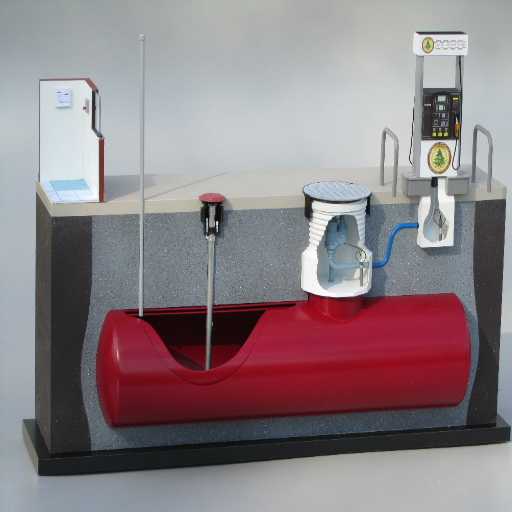
To be efficient, a fuel storage unit must be well-maintained and comply with safety protocols. Regular inspections include checking for the onset or presence of corrosion, leaks, and structural damage. Cleaning the tanks periodically helps prevent sediment buildup, which can affect fuel quality and the tank’s lifespan. Therefore, safety equipment for the containment of spills must be installed, along with an overfill prevention device and a ventilation system, to mitigate potential hazards. The tanks should always comply with the local regulations and standards of the particular industry. Training is provided to staff, enabling them to recognize potential safety hazards and respond appropriately.
Regular Inspection Practices
Good inspection practices truly preserve the safety and reliability of fuel tanks. My approach involves regular visual inspections for wear, corrosion, and leaks, which threaten the integrity of the tank. Sediment buildup is dealt with through periodic cleaning.
Complying with local regulations and safety standards is also a priority. Any safety feature, including spill containment systems and overfill prevention devices, should be regularly inspected and tested for proper function. Timely staff training is also highly recommended to address any hazards that may arise.
Common Issues with Fuel Storage Tanks
If not adequately maintained and monitored, fuel storage tanks are vulnerable to several issues. One typical instance of such injustice is corrosion, especially in underground tanks, where it can cause the structure of the tank to deteriorate, potentially leading to a leak. To prevent this, the use of corrosion-resistant materials or protective coatings should be considered. Another common problem is the buildup of water and sediments, which contaminates both the fuel and the equipment. Hence, regular inspections and cleanings can prevent this buildup. Additionally, there is a possibility that seals, valves, or gauges are faulty or worn out, causing spills, overflows, or operational inefficiencies. All components must be inspected regularly and replaced as necessary to ensure the safe and efficient operation of fuel storage tanks.
Best Practices for Safety and Compliance
To ensure safety and environmental compliance in fuel storage tanks, a holistic and preventive approach is a must-have. The following are detailed best practices supported with fresh knowledge and the most recent industry standards:
Maintenance and Inspection Should Occur on a Regular Schedule: These inspections provide the necessary maintenance to prevent tank problems related to corrosion or mechanical failure. Detailed inspections must be carried out every six months, checking for leaks and corrosion as well as checking the tanks’ overall structural integrity. Industry reports indicate that proper and timely maintenance can mitigate up to 60 percent of potential operational incidents.
Utilize High-Level Leak Detection Systems: With the advancement of technology, highly sensitive leak detection systems are now available to monitor tanks in real-time. Such systems immediately alert tank operators to anomalies, thus dramatically reducing the potential environmental damage. Facilities using automated systems experienced a 40 percent drop in spill-level incidents, according to studies.
Meet Regulatory Requirements: Staying up to date with the regulatory landscape, both locally and internationally, is crucial, including adherence to EPA regulations in the United States and ISO standards at the global level. Failure to do so can result in substantial fines and legal action, as well as damage to one’s reputation. For example, the new guidelines developed by the EPA in 2023 require the use of secondary containment and spill prevention techniques for aboveground storage tanks.
Engage in Corrosion Protection: Corrosion is at the root of many tank failures. Applying coatings, corrosion inhibitors, or cathodic protection systems can significantly extend the life of the tanks. According to research, tanks have a three times higher probability of failing over 10 years if left uncoated compared to those that are coated.
Conduct Regular Staff Training: Staff training is one of the first-line defenses in tank safe practice. The training should incorporate quarterly sessions on equipment, emergency response, and environmental protection, ensuring that every team member is confident in handling potential risks that may be encountered.
Invest in Overfill Prevention Technology: Overfilling is considered a significant risk, leading to large spills and substantial financial losses. The installation of automatic shutoff valves, overflow alarms, and high-level sensors is known to substantially reduce overfill accidents. The research indicated that these measures reduce overfill incidents by 25%-30% in high-volume facilities.
By following these best practices, operators of fuel storage tanks can ensure operational safety, maximize efficiency, and protect the environment, thereby providing long-term compliance and reliability.
Reference Sources
“Petroleum Filling Stations and Their Impact on the Environment in Nigeria”
Frequently Asked Questions (FAQs)
What is the typical size of an underground storage tank (UST) at service stations?
The size of underground storage tanks (USTs) at service stations can vary widely. Generally, gasoline tanks range from 10,000 to 30,000 gallons, while diesel fuel tanks can be larger, often holding up to 40,000 gallons or more. Some larger truck stops may even have tanks exceeding 50,000 gallons to accommodate the high volume of fuel needed for commercial vehicles.
How does the size of a fuel tank affect inventory management at gas stations?
The size of a fuel tank has a direct impact on inventory management at gas stations. Larger tanks, typically ranging from 20,000 to 30,000 gallons, allow for less frequent deliveries, thereby reducing operational costs. However, smaller tanks may require more regular monitoring and delivery to avoid running out of fuel, especially in high-demand areas. Efficient fuel management systems can help service stations optimize their inventory based on tank size and consumption patterns.
What is the process for underground tank removal?
Underground tank removal involves several steps to ensure safety and compliance with environmental regulations. First, the tank is emptied and cleaned to remove any residual fuel. Next, the tank is excavated carefully to avoid damaging surrounding pipes and infrastructure. Finally, the tank is disposed of in accordance with local regulations, which often require documentation to verify proper disposal methods. This process can vary depending on the size and type of the tank, as well as the materials involved.
How do modern fuel storage tanks differ from older models?
Modern fuel storage tanks are designed with advanced technology and safety features that enhance their efficiency and reduce environmental risks. They often include built-in monitoring systems to detect leaks, which helps prevent contamination of groundwater. Additionally, modern tanks are typically made from more durable materials that can withstand corrosion and other environmental factors. These improvements ensure better management of both gasoline and diesel fuel at service stations.
What categories exist for fuel storage tanks?
Fuel storage tanks can be categorized based on their size, type, and intended use. Common categories include residential, commercial, and industrial tanks. Within these categories, tanks are further classified by their fuel type, such as gasoline, diesel, or alternative fuels. Understanding these categories enables operators to identify the ideal tanks for their specific needs, whether for service stations or mobile fuel delivery applications.
How do gas stations ensure the safety of their diesel fuel tanks?
Gas stations ensure the safety of their diesel fuel tanks through regular inspections and maintenance. This includes checking for leaks, corrosion, and ensuring that all connections and pipes are secure. Many stations implement a meter system to monitor fuel levels and detect any discrepancies that may indicate a leak. Compliance with local regulations and standards is crucial, and many stations invest in technology to enhance safety measures.
What is the average capacity of a service station’s storage tank?
The average capacity of a service station’s storage tank typically ranges from 10,000 to 30,000 gallons, depending on the location and volume of traffic. Some larger stations that cater to trucks may feature tanks with capacities of up to 50,000 gallons. This capacity ensures that gas stations can meet consumer demand without frequent refueling, allowing for efficient operation and service.
What should be done with old fuel tanks during disposal?
During disposal, old fuel tanks must be handled carefully to prevent environmental contamination. The tanks should be emptied and cleaned, and any residual fuel must be disposed of according to local regulations. Proper disposal may involve recycling the tank materials or using certified disposal facilities. Gas stations need to follow these procedures to ensure compliance and protect the environment.

